FIH-1-Mint3 axis does not control HIF-1 transcriptional activity in nucleus pulposus cells
- PMID: 24867948
- PMCID: PMC4110272
- DOI: 10.1074/jbc.M114.565101
FIH-1-Mint3 axis does not control HIF-1 transcriptional activity in nucleus pulposus cells
Abstract
The objective of this study was to determine the role of FIH-1 in regulating HIF-1 activity in the nucleus pulposus (NP) cells and the control of this regulation by binding and sequestration of FIH-1 by Mint3. FIH-1 and Mint3 were both expressed in the NP and were shown to strongly co-localize within the cell nucleus. Although both mRNA and protein expression of FIH-1 decreased in hypoxia, only Mint3 protein levels were hypoxiasensitive. Overexpression of FIH-1 was able to reduce HIF-1 function, as seen by changes in activities of hypoxia response element-luciferase reporter and HIF-1-C-TAD and HIF-2-TAD. Moreover, co-transfection of either full-length Mint3 or the N terminus of Mint3 abrogated FIH-1-dependent reduction in HIF-1 activity under both normoxia and hypoxia. Nuclear levels of FIH-1 and Mint3 decreased in hypoxia, and the use of specific nuclear import and export inhibitors clearly showed that cellular compartmentalization of overexpressed FIH-1 was critical for its regulation of HIF-1 activity in NP cells. Interestingly, microarray results after stable silencing of FIH-1 showed no significant changes in transcripts of classical HIF-1 target genes. However, expression of several other transcripts, including those of the Notch pathway, changed in FIH-1-silenced cells. Moreover, co-transfection of Notch-ICD could restore suppression of HIF-1-TAD activity by exogenous FIH-1. Taken together, these results suggest that, possibly due to low endogenous levels and/or preferential association with substrates such as Notch, FIH-1 activity does not represent a major mechanism by which NP cells control HIF-1-dependent transcription, a testament to their adaptation to a unique hypoxic niche.
Figures
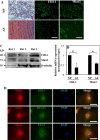
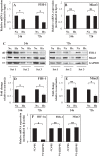
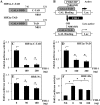
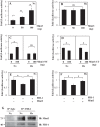
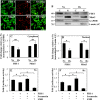

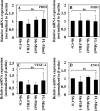

References
-
- Feng H., Danfelter M., Stromqvist B., Heinegard D. (2006) Extracellular matrix in disc degeneration. J. Bone Joint Surg. Am. 88, 25–29 - PubMed
-
- Setton L. A., Chen J. (2006) Mechanobiology of the intervertebral disc and relevance to disc degeneration. J. Bone Joint Surg. Am. 88, 52–57 - PubMed
-
- Kauppila L. I. (1995) Ingrowth of blood vessels in disc degeneration. Angiographic and histological studies of cadaveric spines. J. Bone Joint Surg. Am. 77, 26–31 - PubMed
-
- Rajpurohit R., Risbud M. V., Ducheyne P., Vresilovic E. J., Shapiro I. M. (2002) Phenotypic characteristics of the nucleus pulposus. Expression of hypoxia inducing factor-1, glucose transporter-1 and MMP-2. Cell Tissue Res. 308, 401–407 - PubMed
-
- Risbud M. V., Guttapalli A., Stokes D. G., Hawkins D., Danielson K. G., Schaer T. P., Albert T. J., Shapiro I. M. (2006) Nucleus pulposus cells express HIF-1α under normoxic culture conditions. A metabolic adaptation to the intervertebral disc microenvironment. J. Cell Biochem. 98, 152–159 - PubMed
Publication types
MeSH terms
Substances
Grants and funding
LinkOut - more resources
Full Text Sources
Other Literature Sources
Molecular Biology Databases
Research Materials
Miscellaneous

